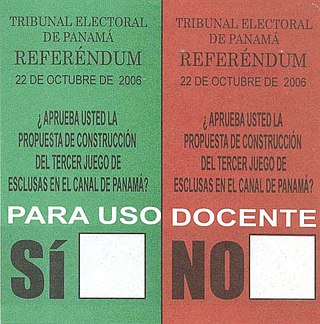October 2012 City of Melbourne, Australia municipal election
As a real life example of the implementation of the two quota systems and the impact it has on the outcome of the election results, we will re-run the Melbourne eleciton as if it was conducted using largest remainder method (LRM).
The City of Melbourne council elections were held in October 2012, under the rules of STV, using the Droop quota, with 9 vacancies to be elected from 40 candidates representing 11 teams plus three independents. The system of vote counting was STV with a Gregory-style method used for transfer of surplus votes. [5]
For 9 seats, the Droop quota was 10% of votes, whilst the Hare quota would have been 11.11%. 63,674 votes were cast, so the Droop quota was 6,368, and the Hare quota would have been 7,075. The following table shows the percentage of first-preference votes received by each party's slate of candidates as a whole and the number of quotas this represents, under each quota, as if the largest-remainder system was in use. To calculate the final result under STV, back-up preferences must be taken into account as well. (They sometimes cross party lines.)
| First-preference votes |
|---|
| Team | No. of votes | Vote % | Droop quotas | Hare quotas |
|---|
| Our Melbourne | 3953 | 6.21% | 0.62 | 0.56 |
| Stephen Mayne | 3828 | 6.01% | 0.60 | 0.54 |
| Residents First: Stop the Rates Rip-off! | 1929 | 3.03% | 0.30 | 0.27 |
| Shanahan Chamberlin for Melbourne | 3686 | 5.79% | 0.58 | 0.52 |
| Community and Business Leadership | 1267 | 1.99% | 0.20 | 0.18 |
| Forward Together | 528 | 0.83% | 0.08 | 0.07 |
| The Greens | 9942 | 15.61% | 1.56 | 1.41 |
| Team Doyle | 23864 | 37.48% | 3.75 | 3.37 |
| Morgan Elliott – Prosperity for Liveability | 6114 | 9.60% | 0.96 | 0.86 |
| Gary Singer – John So Melbourne Living | 8314 | 13.06% | 1.31 | 1.18 |
| Ungrouped | 249 | 0.39% | 0.04 | 0.04 |
| Total formal | 63674 | 100.00% | 10.00 | 9.00 |
|---|
Winning candidates (in the order of their winning in real life through STV in 2012):
| Team | 2012 Droop quota STV result | Hare quota result (LRM) | Droop quota result (LRM) |
|---|
| Team Doyle | Louey, Kevin | Louey, Kevin | Louey, Kevin |
| The Greens | Oke, Cathy | Oke, Cathy | Oke, Cathy |
| Gary Singer – John So Melbourne Living | Ong, Ken | Ong, Ken | Ong, Ken |
| Team Doyle | Wood, Arron | Wood, Arron | Wood, Arron |
| Team Doyle | Pinder-Mortimer, Beverley | Pinder-Mortimer, Beverley | Pinder-Mortimer, Beverley |
| Morgan Elliott – Prosperity for Liveability | Watts, Jackie | Watts, Jackie | Watts, Jackie |
| Our Melbourne | Foster, Richard | Foster, Richard | Foster, Richard |
| Stephen Mayne | Mayne, Stephen | Mayne, Stephen | Mayne, Stephen |
| Shanahan Chamberlin for Melbourne | | Chamberlin, Kevin | |
| The Greens | Leppert, Rohan | | |
| Team Doyle | | | Jetter, Carl |
Five seats are allocated based on full quotas (3 Team Doyle, Gary Singer, Green) under both Hare and Droop. Three of the remaining seats, filled through vote transfers under STV or by largest remainders, are filled the same under both Droop and Hare.
One seat switches from Greens to Shanahan Chamberlin if Hare is used in largest remainder method versus STV.
Team Doyle (headed by Melbourne Lord Mayor Robert Doyle) received 37.5% of first-preference votes. Under Hare quota, they would elect three representatives, comprising 33.3% of the seats. Its remainder is not enough to give it a fourth seat under Hare but under Droop, the .75 quota left over is larger than almost every other fraction. so under Droop, it would take four seats.
The Greens, who received 15.1% of first-preference votes, elect two under STV but only one representative under largest remainder method, if either Droop quota or the Hare quota is used.
Kevin Chamberlin, who received 5.8% of votes, would have been elected if Hare LRM was used. Shanahan Chamberlin for Melbourne did not have enough first-preference votes to make quota under either system. But its fraction is enough to elect one candidate under Hare but not under Droop. (Under Droop, Team Doyle takes four seats, denying the seat to Chamberlin.)
Under the largest-remainder system, votes left over after full quotas fill seats may result in the winning of an additional seat. Seats are filled by comparing fractions and declaring elected the larger until seats are filled.) (This reflects how votes are transferred from a successful candidate to other candidates of the same party slate under STV.)
Under STV, under the Droop quota, the second Green candidate (Rohan Leppert) accumulated enough votes from transfers to win a seat, over either the first Chamberlin candidate or the fourth Doyle candidate. And so the Green party took a second seat under STV. [6]
But under the largest remainder method (with no transfers), using Droop, Team Doyle had enough votes to win a fourth seat.
The Hare quota requires a larger number of votes to elect a member, so reduces the number of votes available for the fourth Doyle member, putting Kevin Chamberlin ahead.
For awarding the final seat, the Droop quota is more favorable to the larger Team Doyle party, while the Hare quota is more favorable to the less-popular Shanahan Chamberlin slate. The Greens benefited from vote transfers when STV was used so took a second seat under STV. In addition, though, we see that the Hare quota, being larger than Droop, put the winning of a seat even farther out of reach for Residents First, Forward Together and other small parties.







